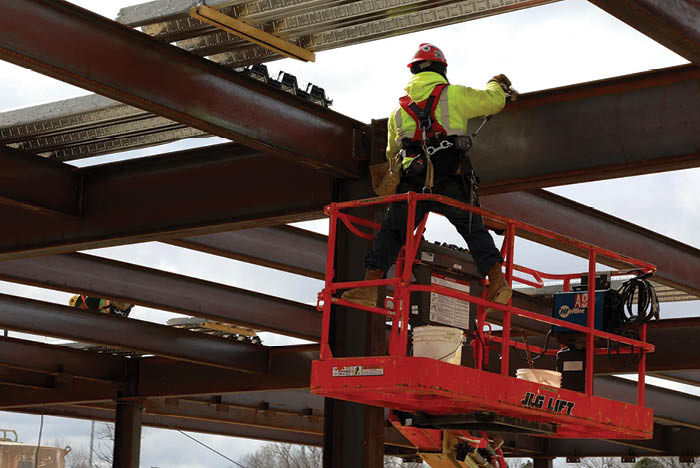ASHE resource tackles safe construction during pandemic

MetroHealth has put in new measures to keep construction workers safe during the pandemic.
Image courtesy of MetroHealth
Health care construction has remained an essential service throughout the pandemic, but even though business has remained, it hasn’t necessarily been business as usual. While many essential services have found new ways to operate while limiting the spread of COVID-19, the health care construction field has adjusted as well.
Adam Ashouri, senior project manager at Messer Construction Co. and a member of the American Society for Health Care Engineering’s (ASHE’s) Young Professionals Committee, says it’s important for the health care construction field to devise new policies to keep workers and construction sites safe during the pandemic. He says it’s also crucial that project owners stay on top of the latest best practices so they can make wise selections during the bidding process.
Ashouri is the lead author of a new ASHE resource titled “Planning Successful and Safe Health Care Construction Projects During the Global Pandemic.” The resource addresses four main elements:
- Contractor and visitor screening.
- Site access and material deliveries.
- Break areas, restrooms and other special areas.
- Special work execution requirements.
The goal of the resource was to put into writing many of the considerations health care construction professionals are working through during the pandemic.
For instance, the Cleveland-based MetroHealth System broke ground on its completely reimagined 52-acre main campus in 2019.
Prior to the pandemic, MetroHealth employed infection prevention best practices appropriate for the time. Today, following new COVID-19-specific recommendations from organizations such as the Centers for Disease Control and Prevention and the Occupational Safety and Health Administration has required some adjustments.
“Turner Construction is the lead construction manager on this project, and they’ve put in very strong protocols as far as how to manage this project,” says Walter Jones, senior vice president of campus transformation at MetroHealth. “We can have about 350 people on the site in one day. They have their masks and gloves on and maintain social distancing where possible. We have hand sanitizer dispensers spread throughout, as well as toilets and hand-washing systems to maintain good hand-hygiene protocol.”
Seven months ago, it was common to see 150 workers on the ground floor of the MetroHealth transformation project’s central utility plant preparing for the day with a morning stretch. Today, that large group has been broken down into five to six groups of eight to 12 people spaced 10 to 12 feet apart in various areas.
Ashouri says that changes like these are becoming the norm across sites.
“Now that we’ve been going through this pandemic for a while and may be for some time to come, this resource is designed to be a starting point,” Ashouri says. “If we want to execute health care projects during a pandemic, what are the things we need to address? What do I need to do to formulate a plan that I can bring to my clients? And, parallel to that, it’s a good resource for someone who works in the facilities department or the design and construction department looking for a good guide to help them ask, ‘Are my contractors implementing the controls they should be to execute a safe and successful project?’”
Some of the considerations discussed in the resource are entirely new factors brought about by the pandemic, such as worker health screenings and protocols for workers to self-quarantine. Some other considerations — such as job site access, material deliveries and hand hygiene — are long-established factors that have now taken on a new significance in light of COVID-19.
As the construction field works alongside the health care community to devise new ways of conducting business, Ashouri says that many of the practices being developed today may stick around.
“I think some of these new measures could last,” Ashouri says. “While what we’re going through has many growing pains associated with it, at the end of the day, it is creating safer and cleaner sites,” he concludes.




